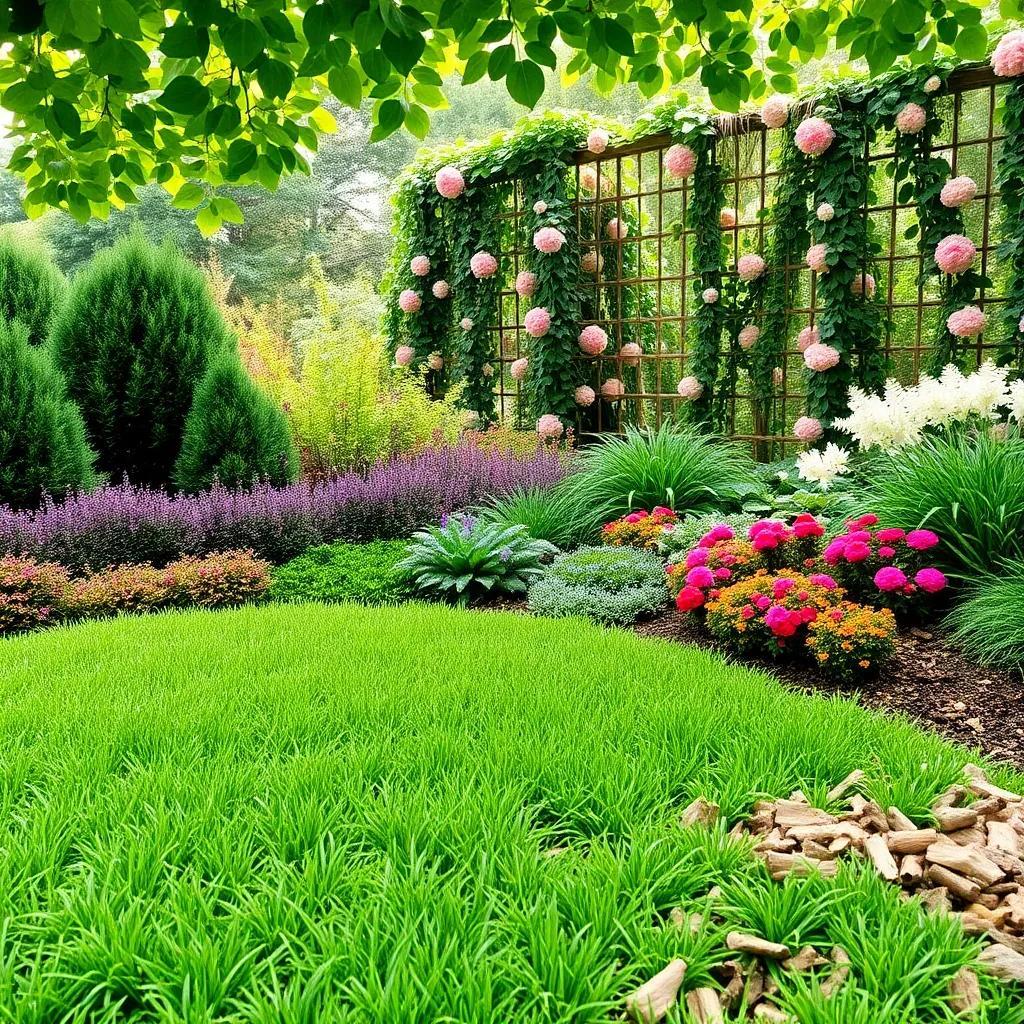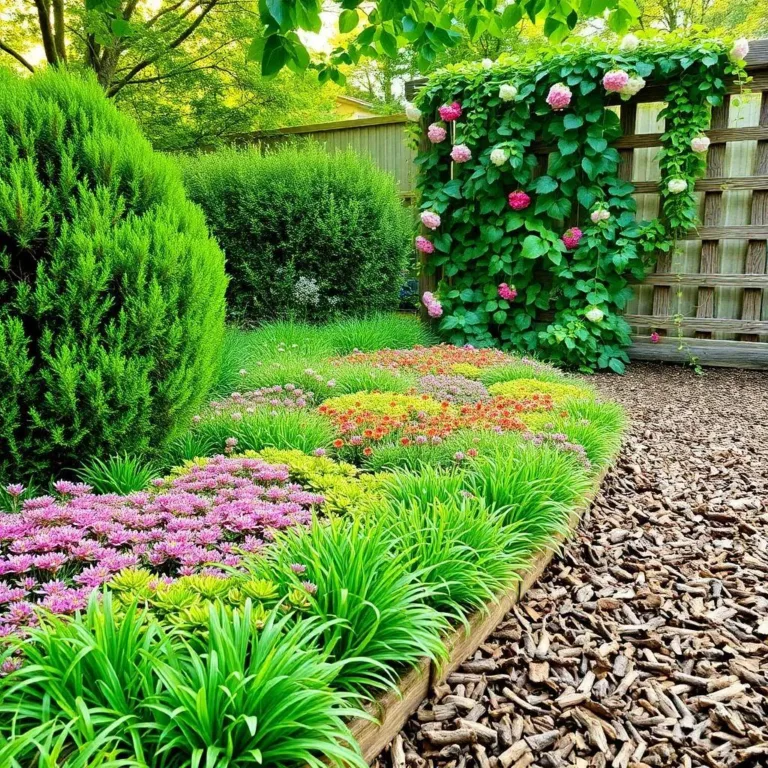Have you ever wondered how to keep your soil safe and sound while adding beauty to your garden? Ground cover plants are the secret to preventing erosion and creating a vibrant landscape! Join me as we explore the best types of ground cover, their incredible benefits, and how to take care of them like a pro!
Types of Ground Cover for Effective Erosion Control
When it comes to erosion control, choosing the right type of ground cover is like picking the right toppings for your pizza – it can make all the difference! There are several options out there, each with its unique benefits. Let’s explore some popular types.
- Grass: Ah, the classic choice! Grass is a favorite for many homeowners. With its dense root system, it holds the soil in place like a champion. Plus, grass comes in different varieties. You have cool-season grasses, like Kentucky bluegrass, which thrive in cooler climates, and warm-season grasses, like Bermuda grass, that love the heat!
- Groundcover Plants: These little beauties are low-growing and can spread like wildfire (in a good way!). Think of plants like creeping thyme or sedum. Not only do they prevent erosion, but they also add visual interest to your garden. Imagine a carpet of flowers instead of bare soil!
- Shrubs and Bushes: If you want a bit more height, shrubs might be your go-to option. Their roots dig deep, and their dense foliage creates a barrier against wind and rain. Consider using juniper or cotoneaster for a sturdy choice!
- Vines: Planning to spruce up a trellis or fence? Vines like English ivy or Virginia creeper will climb up and create a beautiful green wall while stabilizing the soil behind them. They’re like nature’s little climbers, getting the job done stylishly!
- Mulch: Okay, mulch is not a plant, but it’s an MVP in this lineup! Whether it’s wood chips or rubber mulch, it acts as a protective blanket for the soil. By absorbing rainfall impact, it reduces erosion. Plus, it helps keep weeds at bay!
Choosing the right ground cover is key! You want something that suits your climate and meets your aesthetic needs. By mixing and matching these options, you can create a beautiful and effective barrier against erosion.
Benefits of Vegetation in Preventing Soil Erosion
Now that we’ve covered the types of ground cover, let’s chat about why vegetation is so important in preventing soil erosion! It’s like having a superhero on your lawn!
- Root Reinforcement: Have you ever noticed how roots intertwine with the soil? It’s like they’re holding hands! This connection helps anchor the soil, making it less likely to wash away. Stronger roots mean less erosion – it’s a win-win!
- Water Absorption: Vegetation has this amazing ability to absorb water! When it rains, plants catch those droplets. This slows down water movement, reducing the impact on the soil. It’s like having a sponge in your yard!
- Soil Structure Improvement: As plants grow and shed leaves, they add organic matter to the soil. This helps create the perfect environment for beneficial bacteria and worms. And guess what? A healthy soil structure is much more resistant to erosion!
- Wind Reduction: Ever been blown away by a strong gust of wind? Well, vegetation acts as a buffer. Trees and shrubs can break the wind’s force, preventing soil particles from getting carried away. It’s like having a wind shield for your garden!
- Moisture Conservation: Plants create shade, which keeps the soil cooler and reduces evaporation. This helps maintain moisture levels, making the soil stronger and less prone to erosion.
In a nutshell, vegetation is your best friend when it comes to fighting erosion! By incorporating various plants, you not only protect your soil but also create a beautiful environment. Who knew gardening could be this beneficial? Happy planting!

Choosing the Right Ground Cover for Your Landscape
Selecting the perfect ground cover for your landscape is like picking the right outfit for a special occasion – it should fit well and look fabulous! Here are some fun tips to help you choose wisely:
- Assess Your Space: Start by checking out your site conditions! What type of soil do you have? Is it sandy, clayey, or loamy? Also, take note of sunlight. Is there full sun, partial shade, or heavy shade? Some plants love the sun, while others prefer a cool spot!
- Consider the Slope: If you have a sloped area, you’ll need stronger ground covers to prevent erosion. Grass and dense shrubs are fantastic choices that can hold the soil in place on inclines.
- Think About Maintenance: How much time can you spare for gardening? Some plants, like grass, need regular mowing and watering. Other options, like certain ground cover plants, may only need occasional pruning. Choose what fits your lifestyle!
- Aesthetic Appeal: What do you want your garden to look like? Do you prefer colorful flowers, rich greenery, or a mixture of both? Choose plants that reflect your style and enhance your landscape!
- Mix It Up: Don’t be afraid to create a mix! Combining different ground covers can enhance biodiversity and create a more resilient environment. Think of it as throwing a fun party for different plants!
By keeping these tips in mind, you’ll not only find the perfect ground cover but also have fun while doing it! Happy planting!
Case Studies: Ground Cover Impact on Erosion Control
Let’s take a stroll down memory lane and check out some interesting case studies that highlight how ground cover affects erosion control. These stories prove that the right plants can work wonders!
- Grass vs. Bare Soil: There was a study on a construction site where researchers compared areas with grass cover to those with bare soil. Guess what? The grass areas had way less erosion! The roots held the soil in place, while the bare patches were washed away like sandcastles at high tide.
- Revegetation Post-Fire: After a wildfire, a team studied how different ground covers helped recovery in affected areas. They found that areas replanted with ground cover plants had lower erosion rates. Those plants acted like superheroes, stabilizing the soil and allowing the ecosystem to bounce back more effectively!
- Mulch Magic: On sloped lands, mulch was tested against areas without it. The results were eye-opening! Mulched areas experienced a drastic reduction in soil erosion. The mulch absorbed rain impact and kept the soil intact. Talk about magic right under our feet!
- Urban Vine Success: In urban settings, some researchers explored the use of vines as ground cover. They found that vines, like English ivy, reduced wind speed, preventing soil erosion on vertical surfaces. It’s impressive how these green friends can tackle urban challenges!
These case studies show us the powerful benefits of ground cover. By choosing the right type of plants, we can protect our soil and maintain healthy ecosystems!
Maintenance Tips for Sustainable Ground Cover Solutions
Once you’ve chosen your ground cover, it’s time for some TLC! Proper maintenance will help your plants thrive and keep erosion at bay. Here are some handy tips:
- Regular Watering: Newly planted ground covers need plenty of water! Make sure to keep the soil moist, especially during dry spells. Once established, many ground covers, like certain grasses and succulents, will require less water!
- Weed Control: Weeds can be sneaky little foes, stealing nutrients and water from your beloved plants. Keep an eye out for them! Pull them out by hand or use mulch to smother unwanted growth.
- Pruning: Some ground cover plants might spread a bit too far, and that’s okay! Regular pruning will keep them in check and encourage healthy growth. Just think of it as giving them a stylish haircut!
- Fertilize Wisely: If you want your ground cover to be the star of the garden, occasional fertilization can give them a boost. Use organic fertilizers to enhance the nutrient profile of the soil without harming the environment.
- Pest Patrol: Keep an eye out for any pesky pests that might invade your garden. A gentle spray of water or natural pest control methods can help keep your ground cover healthy.
By following these simple maintenance tips, you’ll have a flourishing ground cover that not only beautifies your landscape but also protects against erosion! Remember, happy plants lead to a happy garden!

